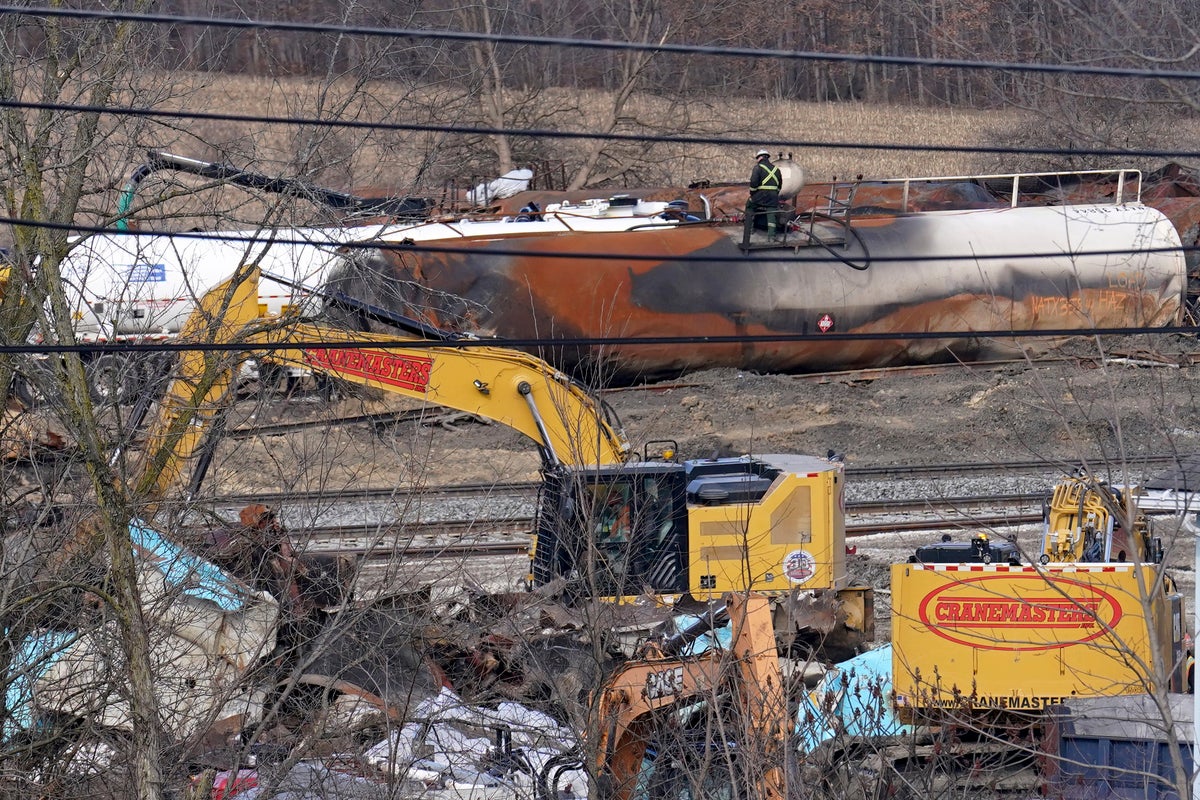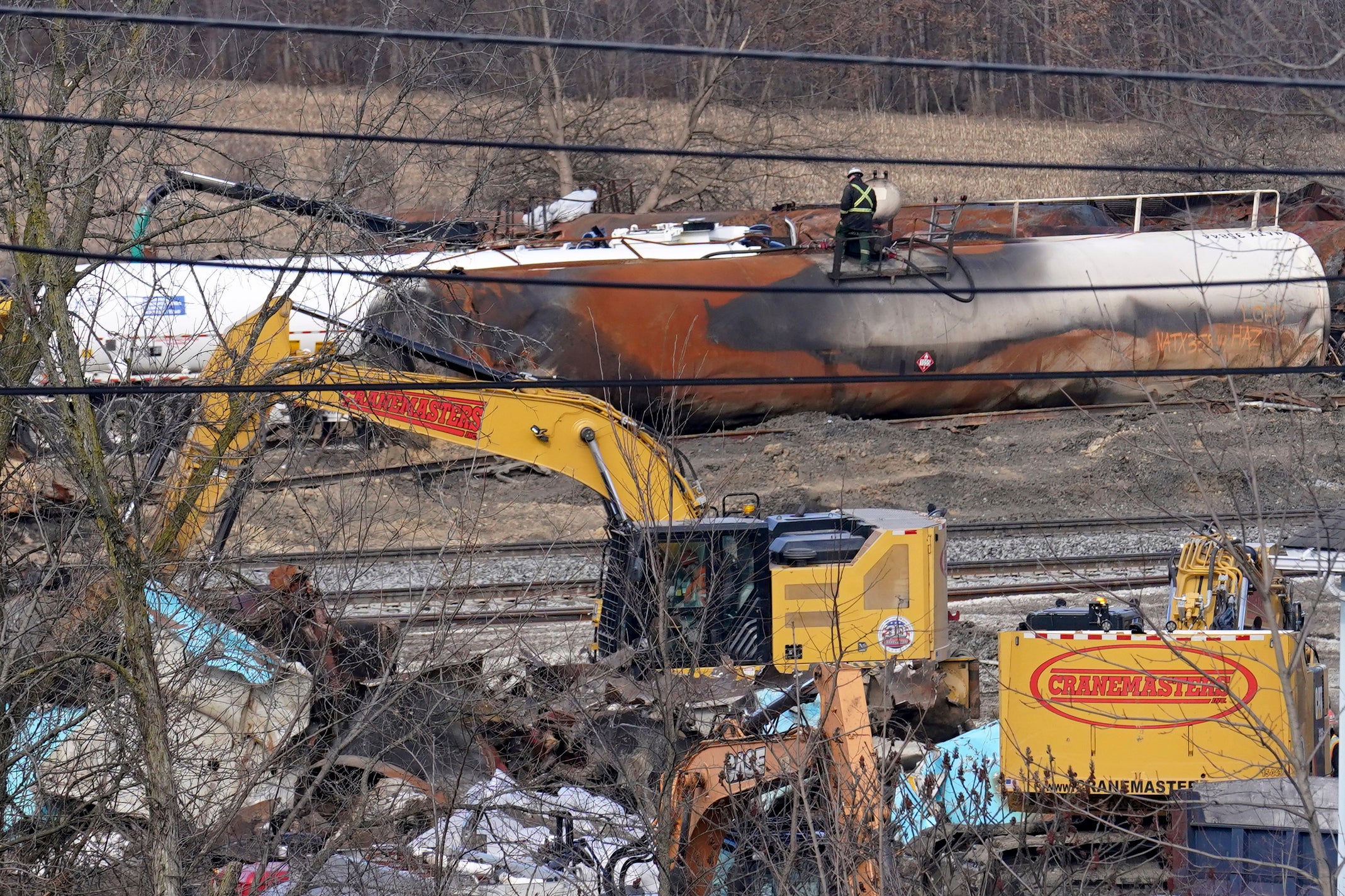
The crew of the train that derailed in Ohio earlier this month got a warning about mechanical issues and tried to slow down before the accident, according to a preliminary report released on Thursday from the National Transportation Safety Board (NTSB).
Engineers aboard the Norfolk Southern Railway train on 3 February were alerted that a wheel bearing was exceeding safe heat levels, at one point reaching 253F hotter than the surrounding air temperature.
A crew member pulled the train’s brakes, triggering an automatic braking system, but it was too late, and numerous cars went off the tracks.
Officials from the NTSB said the Ohio train derailment was “100 per cent” preventable during a press conference discussing the causes of the accident.
During a briefing on Thursday, NTSB Chair Jennifer Homendy laid out their findings in a report and discussed their conclusions with reporters in Washington DC.
She said that she has never seen an accident that “isn’t preventable,” and that actions are always available to prevent these situations.
The agency had already determined that the cause of the accident was the result of an overheated wheel bearing on the 23rd car of the 150-car Norfolk Southern train that derailed near East Palestine, Ohio.
Officials said the cars that breached and caught fire were equipped with plastic hazmat placards that are used to tell rail officials what materials are inside the cargo tankers. The plastic hazmat placards melted due to the heat, which hindered responders from knowing exactly what materials they were dealing with at the time of the accident. The fire at the scene lasted for more than 100 minutes, according to the NTSB.
The fire caused the vinyl chloride the tankers were carrying to rise, which began a chemical reaction that could have resulted in a significiant explosion. Norfolk Southern crews and emergency responders opted to vent and burn the vinyl chloride to pevent the explosion.
Ms Homendy said the agency will “determine whether we recommend something else to protect placards,” such as changing the material used to manufacture the materials.
The NTSB also revealed that the wheel bearing’s high temperature did not trigger defect detectors along the track until it was close to failure. The official said the standards for acceptable wheel bearing temperatures are set by the rail companies — in this case Norfolk Southern — but said the agency was going to examine whether or not those standards need to be changed.

In addition to examining the cause of the accident, the agency has also made recommendations for preventing future disasters like the one in East Palestine. Those include more robust communication to communities about the kind of materials trains are transporting through towns.
Ms Homendy said that the “absolutely deserves to know whether they live or work near a hazmat route,” and suggested communities understand what materials are being brought through their towns, who will respond in the event of an accident, and have contingencies in place for how communities will respond after an accident.
The agency said railroads should be working with communities to develop response plans, and said the agency is examining whether certain materials should be moved through populated areas at all.
Ms Homendy said it was too early to tell whether or not the crash was directly Norfolk Southern’s fault, but said it would be part of the agency’s analysis.







